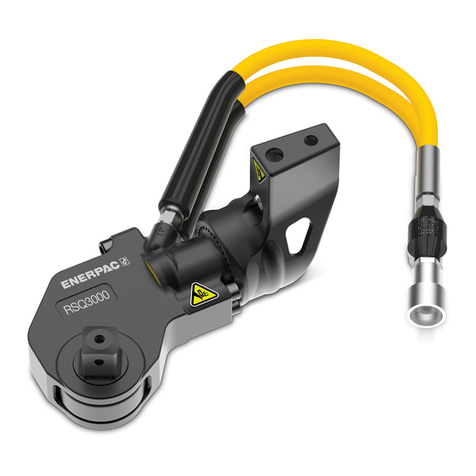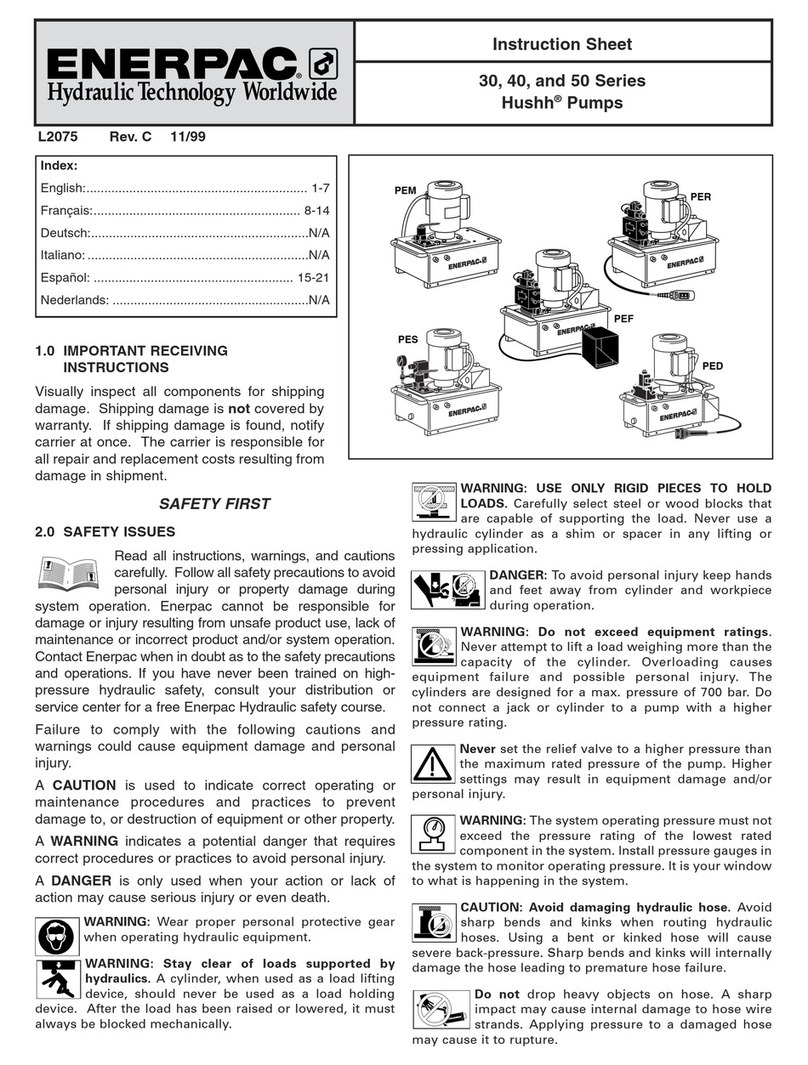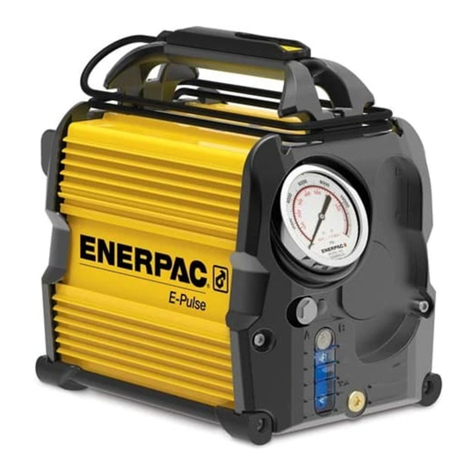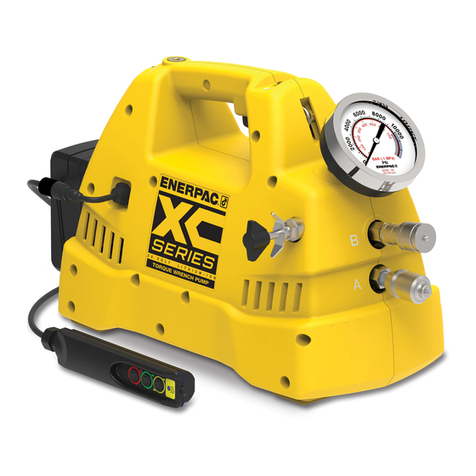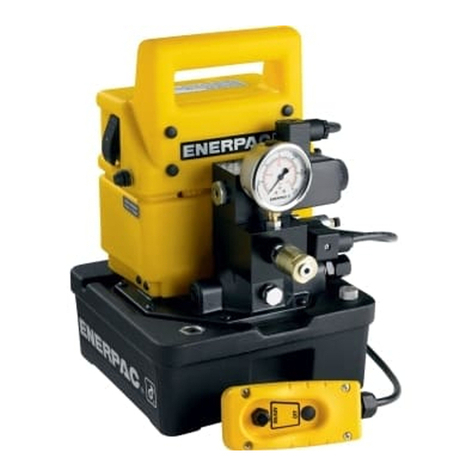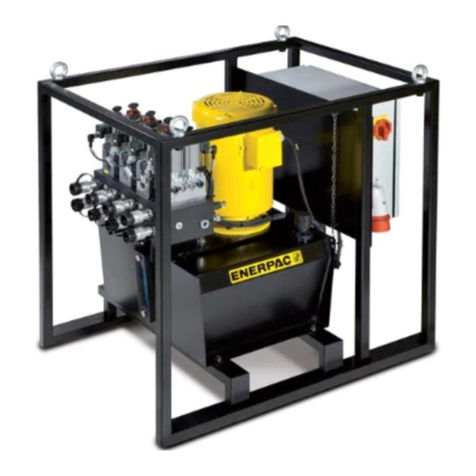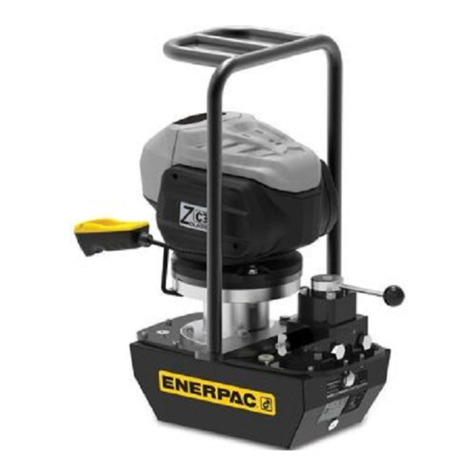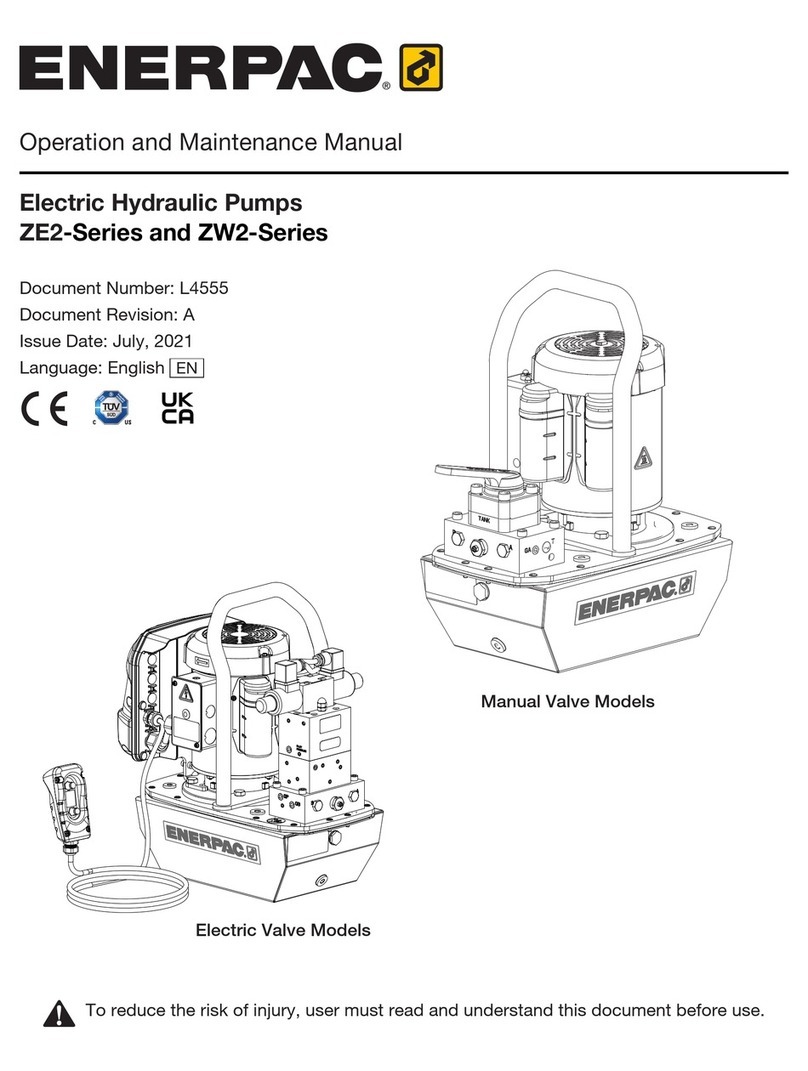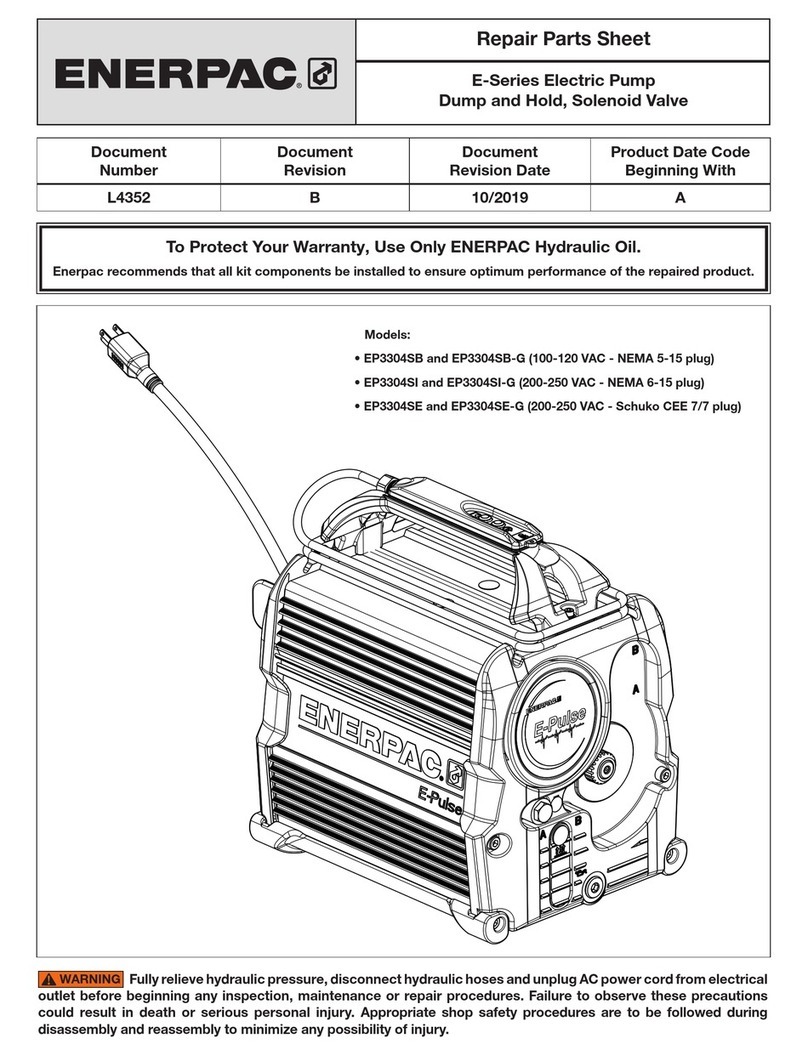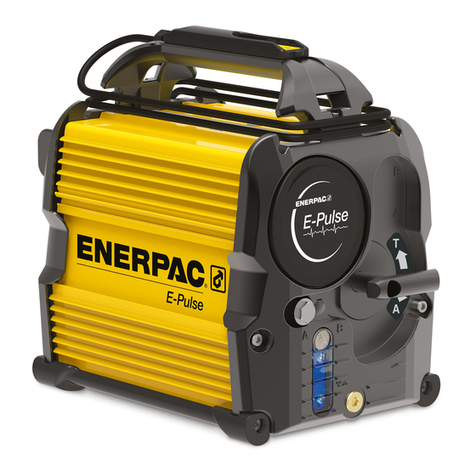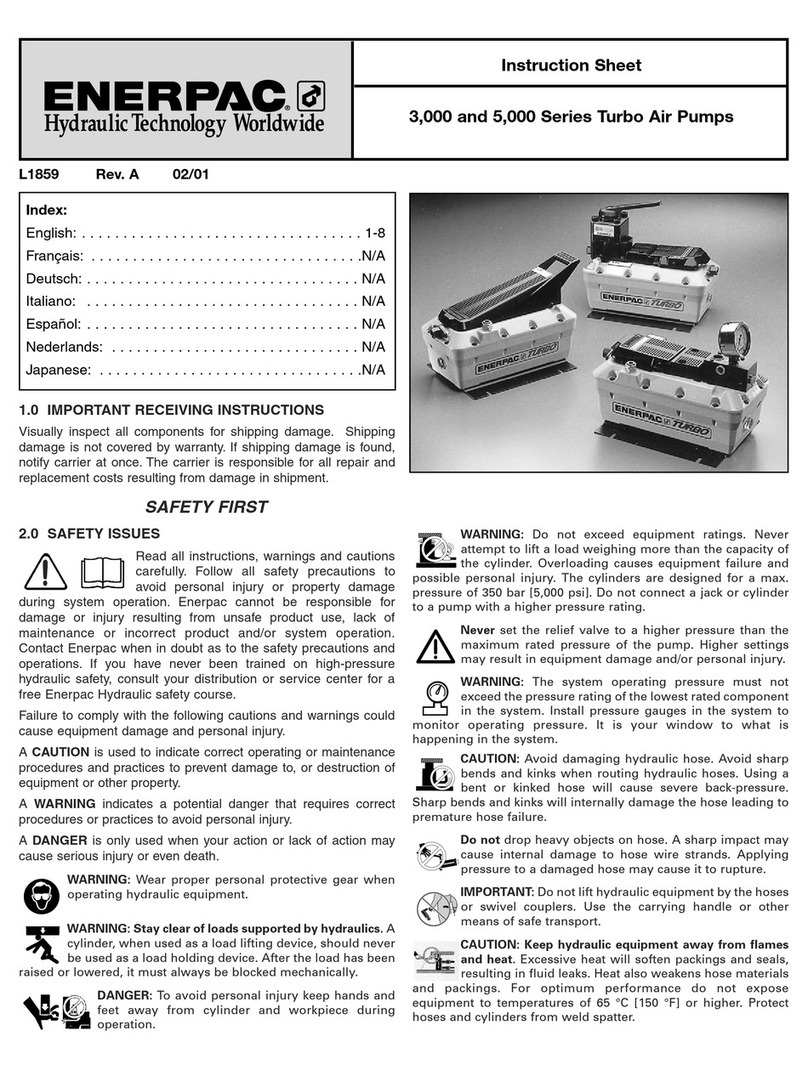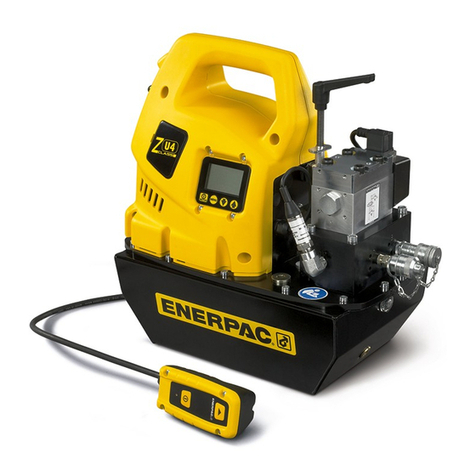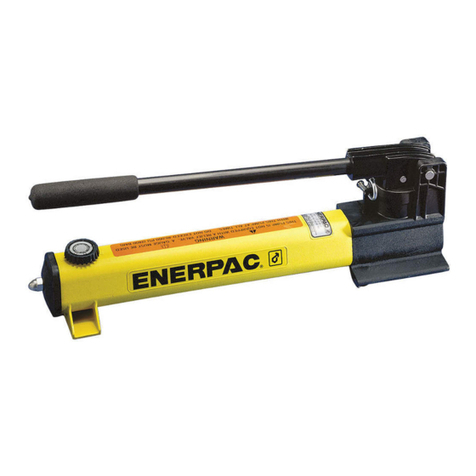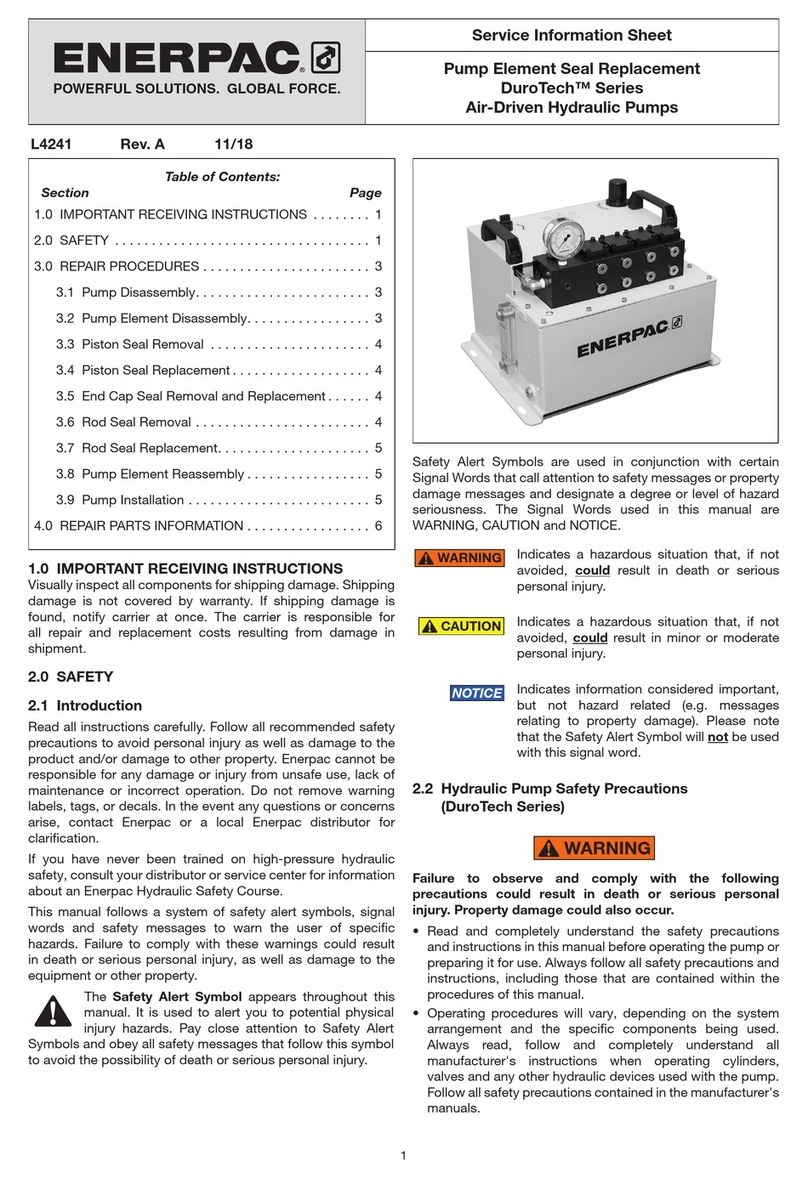
8L4383
7.2 Repairing The Pilot Valve Assembly
1. The Pilot Valve Assembly, {figure 7}, has an Air
Check Assembly, {item 6; figure 7}, located in the
lower end.
2. Remove the Retaining Ring, {item 1; figure 7}, which
locks the Valve Seat, {item 7; figure 7}, in place and
remove the Valve Seat with a spanner wrench.
3. The Air Check Assembly, and the Spring, {item 4;
figure 7}, will then drop out and may be inspected
for wear or damage. Replace the springs and worn
parts as required.
4. When installing the Spring, {item 7; figure 8}, in
the Air Check Assembly {figure 8}, the assembly
should be screwed together until the component
parts are drawn up just snugly with no travel in the
bolt assembly and then the nut should be backed
o ONE COMPLETE TURN for proper adjustment.
5. When the assembly adjustment has been done
correctly, the valve will open approximately 1/32
inch when the bolt assembly is depressed to open
the valve.
7.3 To Replace the Packing in the Hydraulic
Cylinder
It is not necessary to dismantle the Air Motor. Proceed
as follows.
1. Disconnect the Air Supply Line, remove the muer
if necessary and loosen the Set Screw in the Air
Cylinder End {item 25; figure 5}.
2. Unscrew the Air Motor from the Hydraulic Cylinder.
The Hydraulic Piston will be removed with the Air
Motor, permitting convenient replacement of the
packing in the Hydraulic Cylinder.
3. Replace the Backup Rings and the “O” Rings. The
Parts List will give the size and kind of packing
required, and when installing the new packings, be
sure that the Backup Rings are properly in place.
If they are damaged or not installed correctly, the
“O” Ring will malfunction, with resultant loss of
pressure and packing failure
4. When replacing the Air Motor, install a new Gasket
{item 9; figure 6} and see that the Hydraulic Piston
is in proper alignment before screwing the Air Motor
down into position. Tighten the Air Motor securely
and also the Set Screw {item 25; figure 5} in the Air
Cylinder End.
Models with Isolator Attachment or “V” Ring
packing in the Hydraulic Cylinder will require removal
of the Isolator or the Adaptor on the “V” Ring packed
cylinders to replace packings.
7.4 The Hydraulic Piston
This has a Rubber Bumper, {item 16; figure 6}, in the
Head. If replacement is required remove capscrew and
install new Rubber. Apply “LOCTITE” sealant to the
capscrew threads when replacing and tighten securely,
but not to exceed five foot pounds of torque.
NOTE The Piston Stem is chrome plated, honed
and lapped to a very close tolerance with the Hydraulic
Cylinder. Should it show indications of wear or being
scored (usually due to foreign matter being present
in the hydraulic fluid), the entire Hydraulic Piston and
Cylinder Assembly, {figure 6}, should be returned to the
factory, for repair or replacement as required.
7.5 Repairing or Replacing the Hydraulic Check
Values
These Valves should not give any trouble unless foreign
matter such as dirt or grit are present in the fluid supply.
If a leak develops remove the Check Valves from the
Hydraulic Cylinder. Remove the “O” Rings and replace
with a new one. Inspect the ball seat in the Valve while
the “O” Ring is removed. If it shows any indication of
wear or damage, the entire Valve Assembly should
be replaced. Refer to the RPS for Enerpac Air Pump
D3001A0115AA for part numbers {item 6} and cross
section {figure 7} of the Valves.
1. When operations described in paragraphs 7.1
through to 7.2 have been completed, the entire
unit will have been dismantled and all parts
inspected for wear and damage. It is especially
important that all parts that operate in “O” Rings
or Packing be free from pits, scoring, or any other
defects that may cause excessively rapid wear of
“O” Rings and Packing, since leaks will develop
almost immediately under these conditions and
satisfactory performance will not result.
7.6 Reassembling the Pump
Reverse the procedure used for dismantling, making
sure that all Retaining Rings are properly in place and
that no “O” Rings have been damaged in reassembly.
When reassembling the Air Motor be sure that
the Air Cylinder, {item 3; figure 5} is in proper position
against the flanges on the Pump Head and the Air
Cylinder Ends before tightening the bolts that clamp the
Air Motor together. Use a soft hammer to position the
flanges tightly against the Air Cylinder Ends BEFORE
tightening the bolts. Failure to do this can result in over-
tightening the bolts initially and when the bolts on the
opposite side are drawn up this may result in the bolt
lugs being broken or twisted o when the assembly
is drawn down into position. Bolts should be secured
lightly at first then drawn up in sequence until uniform
torque has been applied to all of the bolts around the
perimeter of the pump (10-12 foot lbs).
CAUTION
